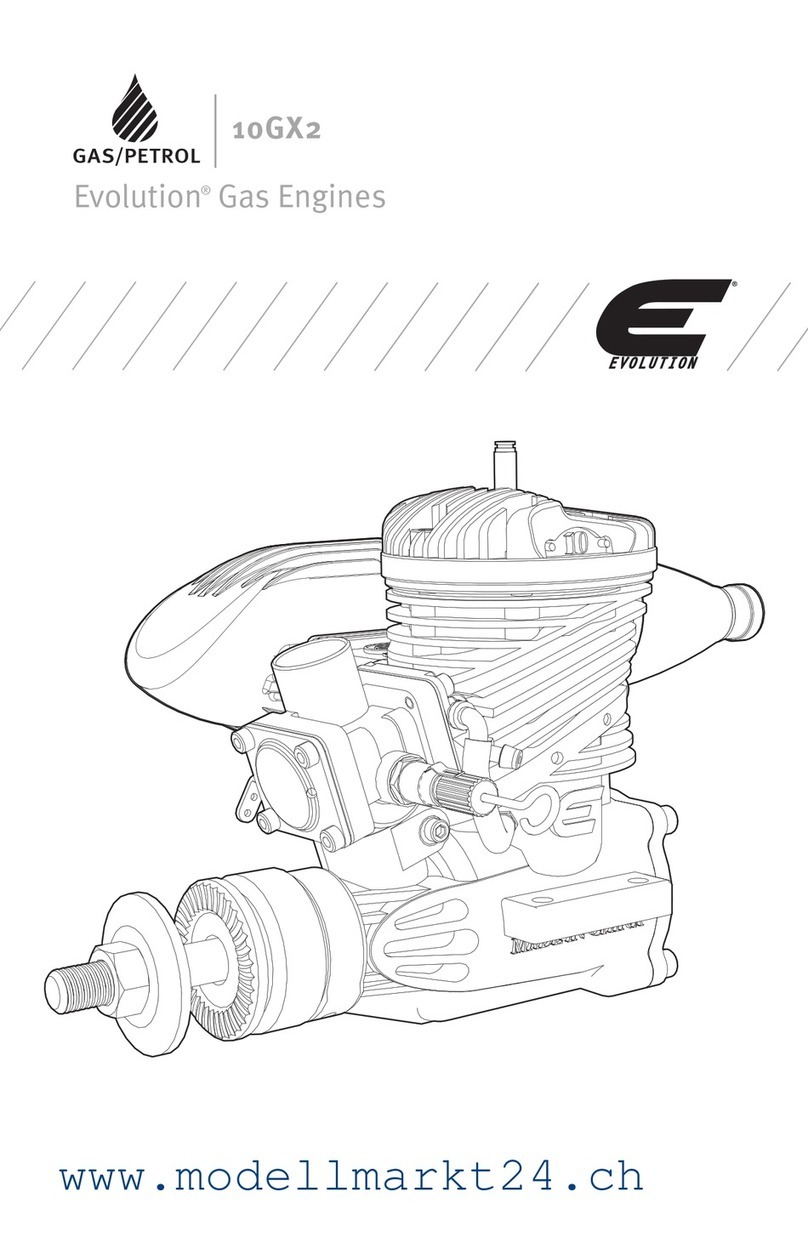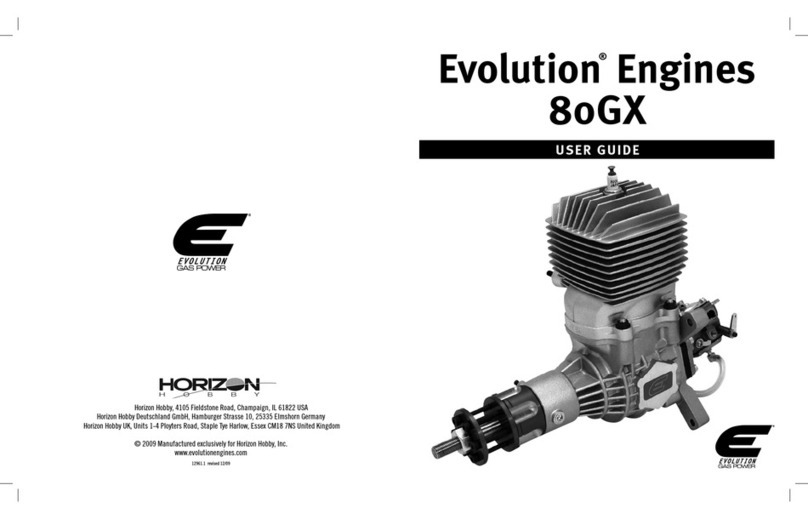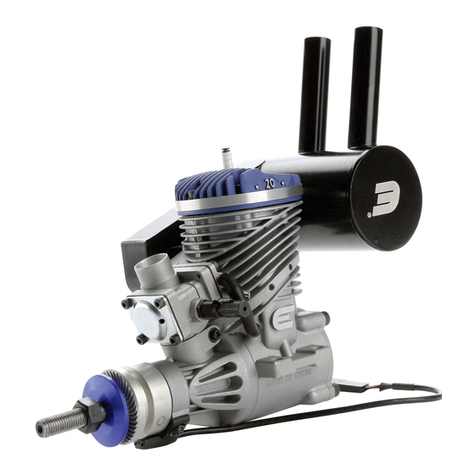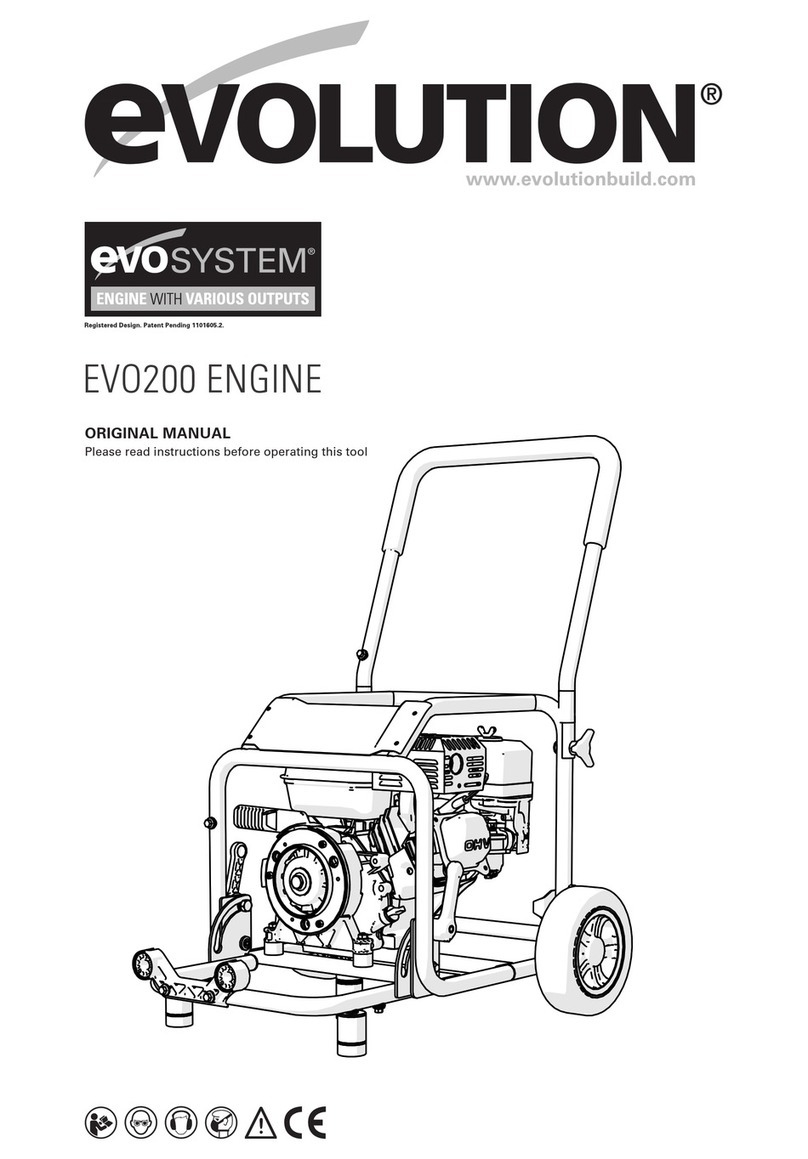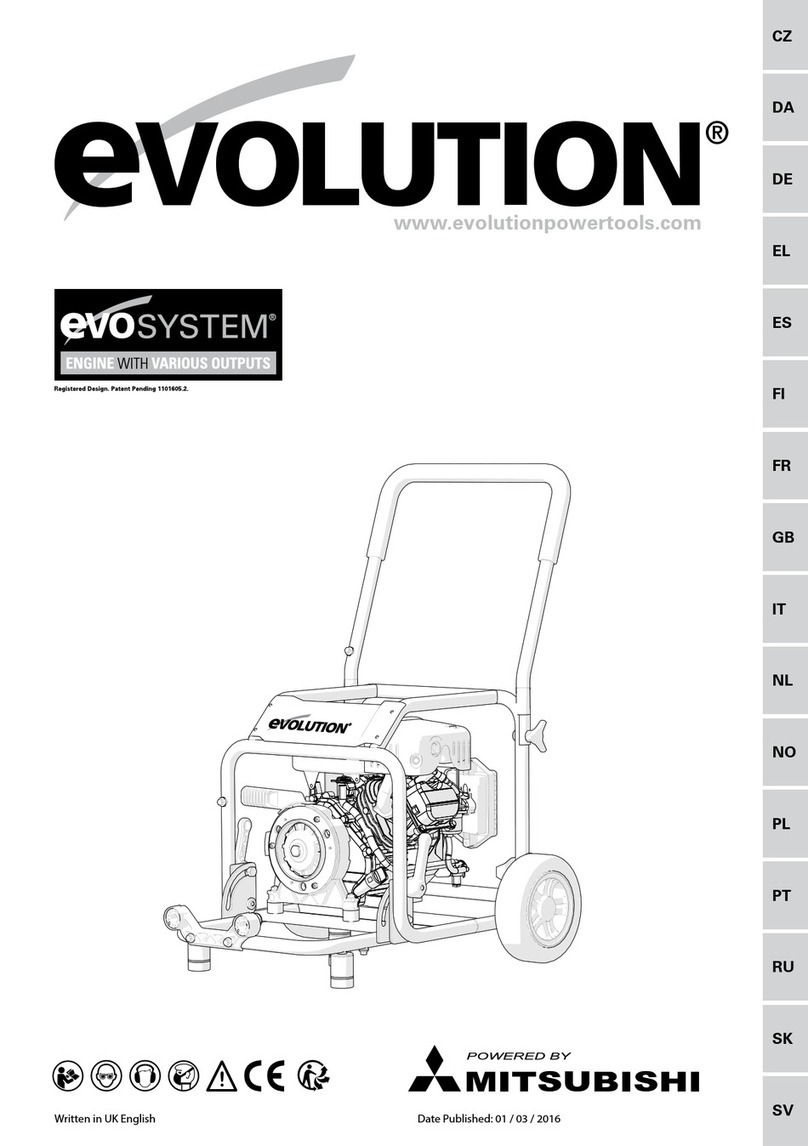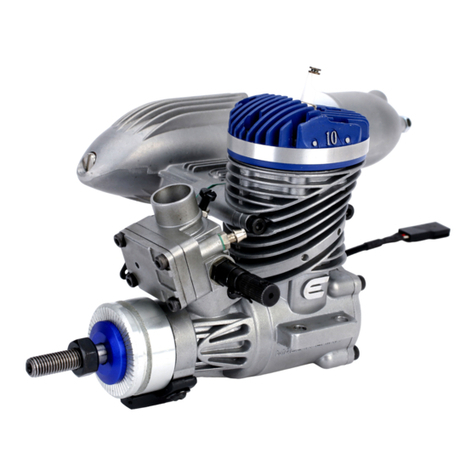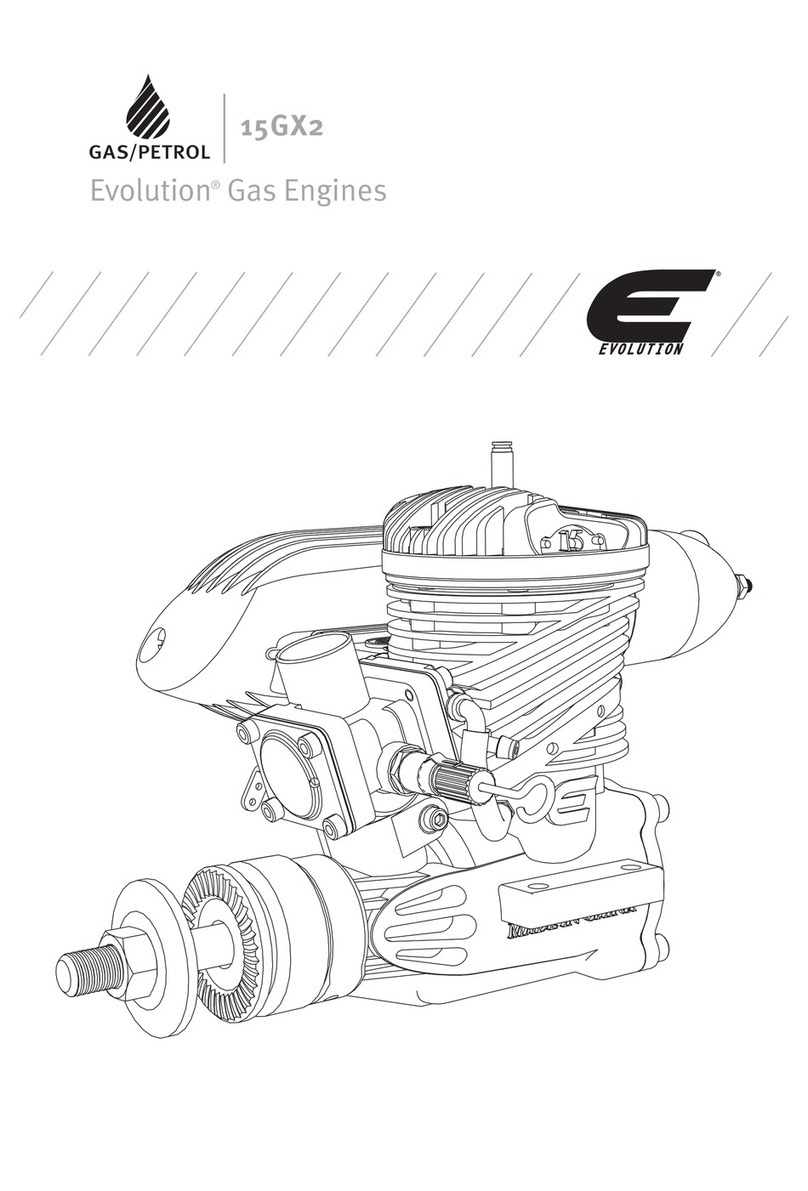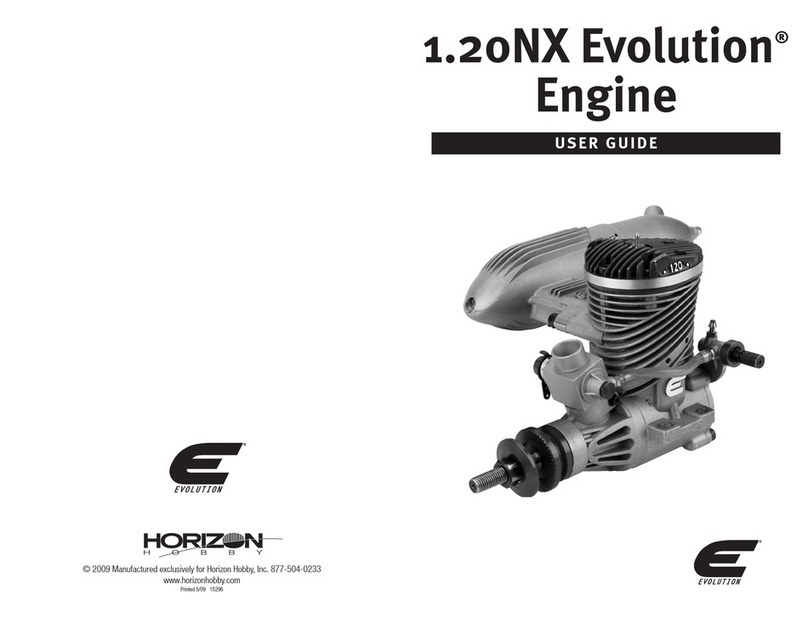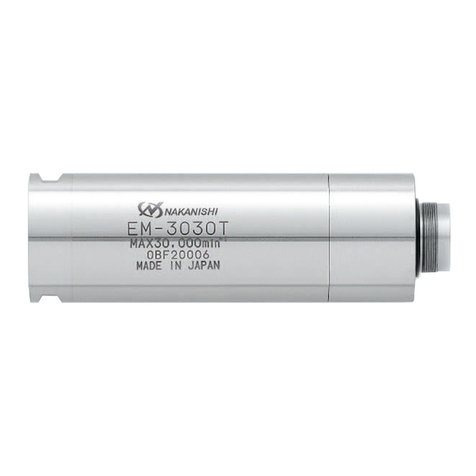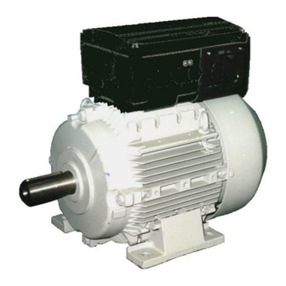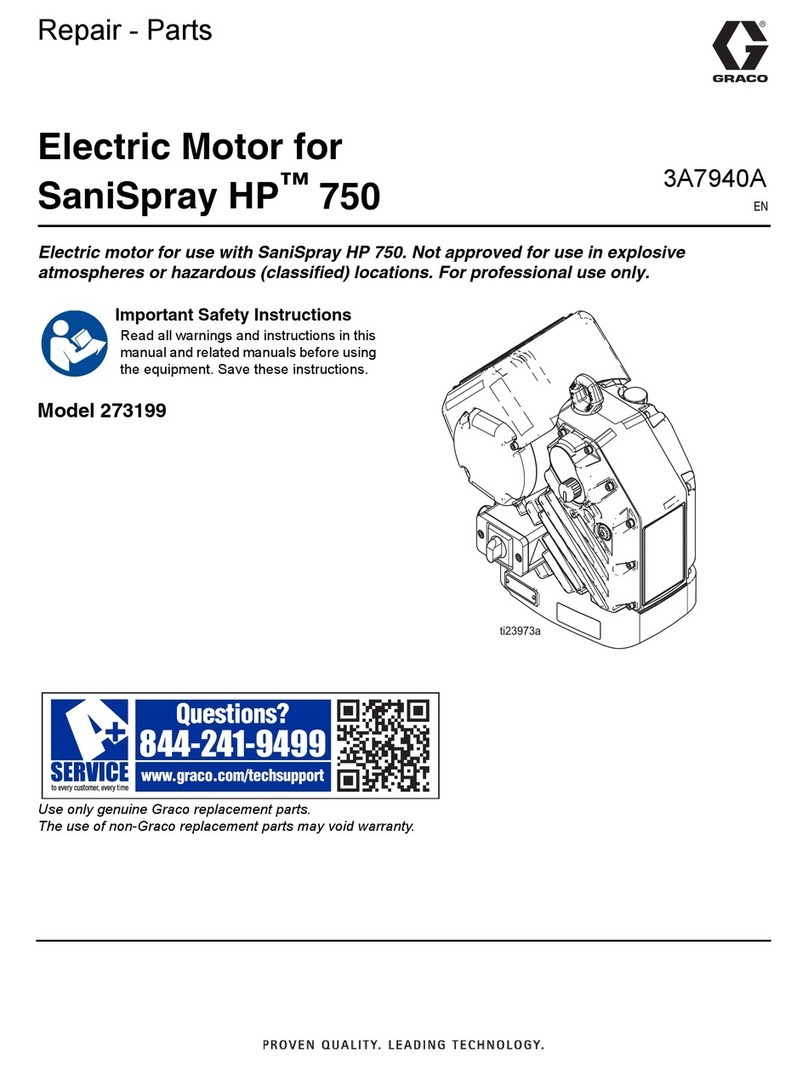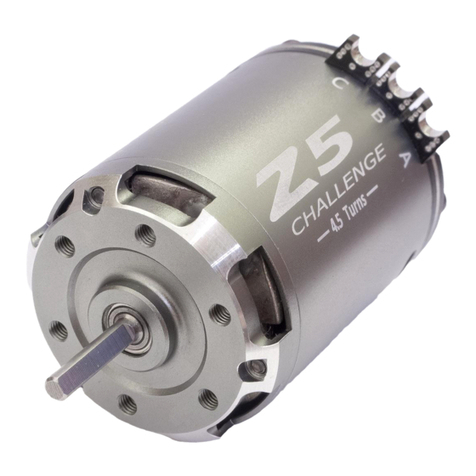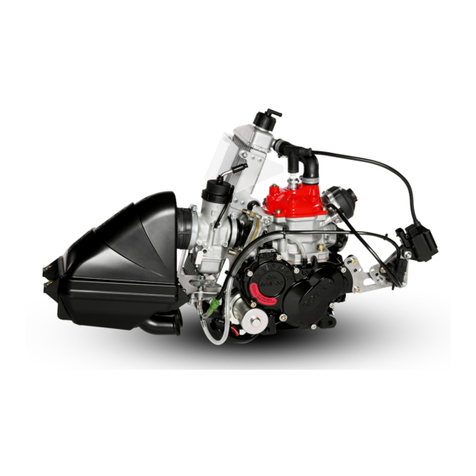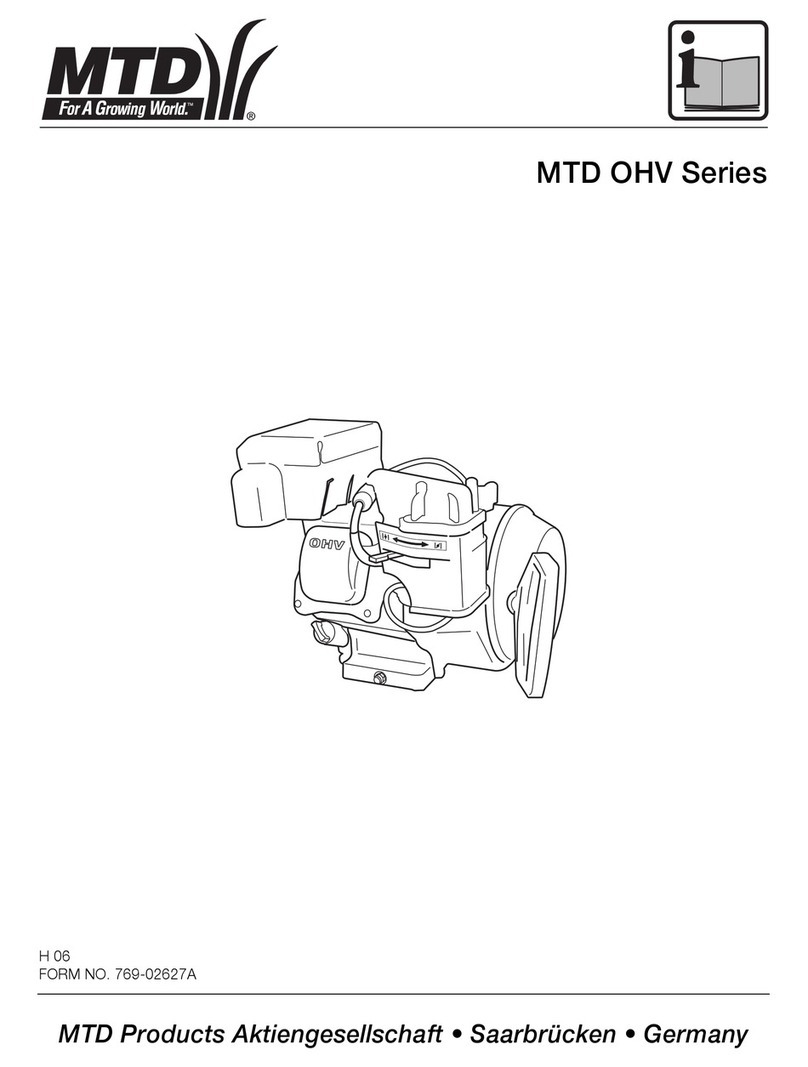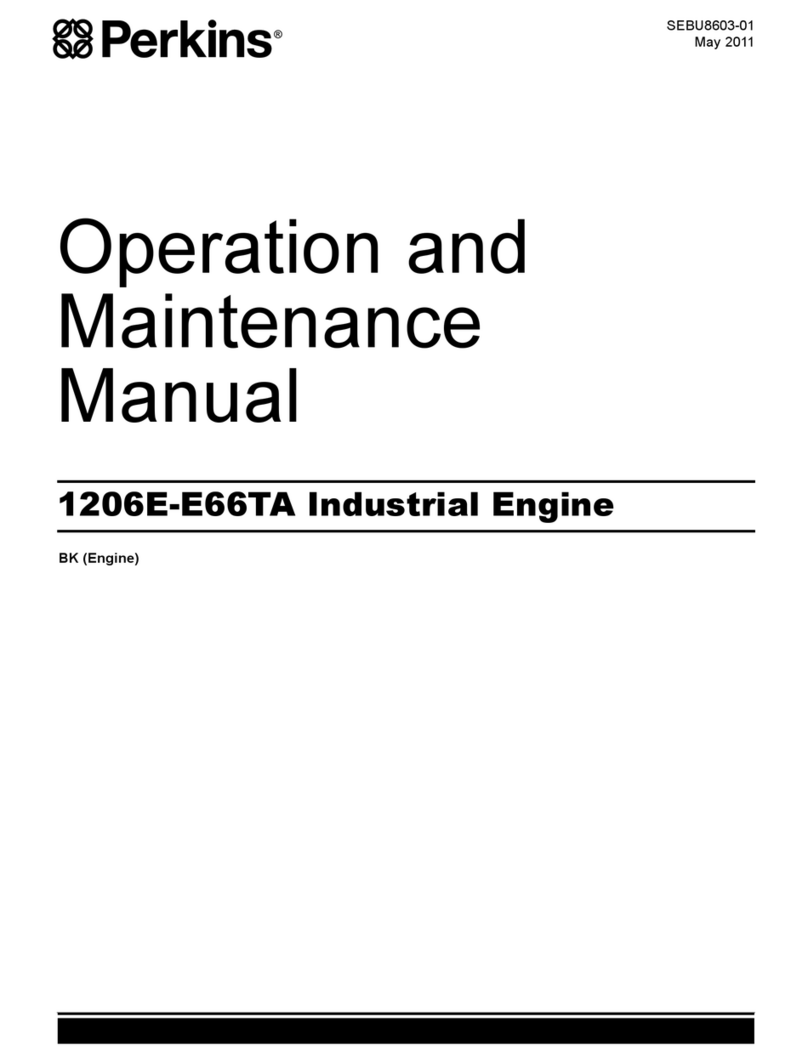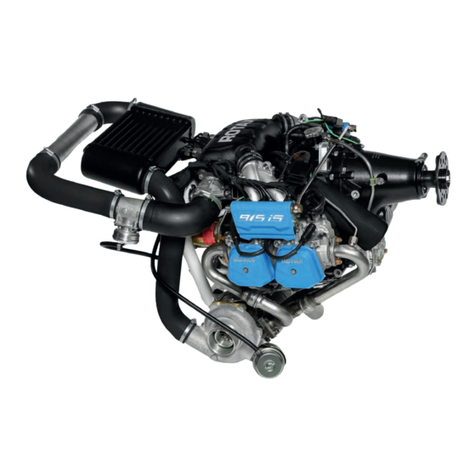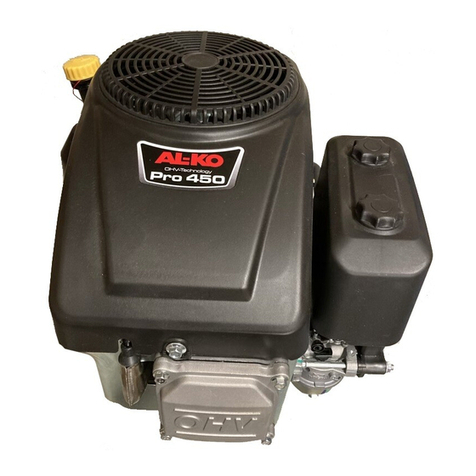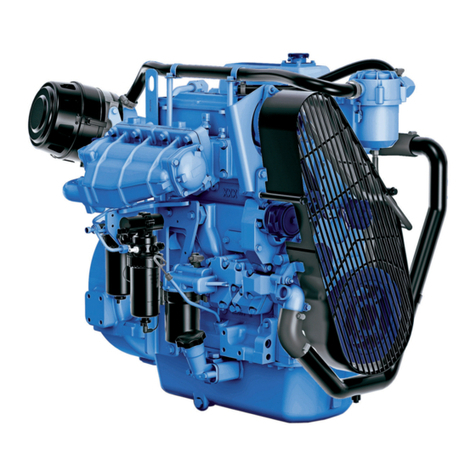Between 6 – 8 full turns of the bolt head
should be sufficient for the dog clutch to be
disconnected from the engine crankshaft.
This however may not be apparent to the
operator as the bolt may not withdraw from
the dog clutch.
• Gently pull on the dog clutch and ease the
assembly from the engine.
The rubber coupling can now be inspected in
‘situ’ or removed from the inside of the dog
clutch for closer inspection. For close
inspection, gently ease the rubber coupling
from the inside of the dog clutch by pulling
it outwards. A at bladed screwdriver can be
used to help ease the rubber coupling from
the dog clutch, but exercise care so as not to
score or otherwise damage any of the parts.
Inspect the 6 ‘teeth’ of the rubber element for
wear or damage.
Slight surface hairline fractures of the
rubber compound are to be expected and are
acceptable. Cracks or missing rubber is not
acceptable, and if detected the element must
be replaced.
If you are at all doubtful of the serviceability
of the rubber element replace it as a matter
of course.
Replacement of the rubber element and dog
clutch is a reversal of the removal
procedure.
However note the following:
• The rubber element is a precise t within
the dog clutch.
• The rubber element within the dog clutch
must be aligned with the tri-lobed drive
sprocket on the engine crankshaft.
• The ø19 mm bolt must be screwed fully
‘home’ into the ‘top hat bush’
• Gently push the dog clutch into place
within the engine.
• Hold the crankshaft so that it cannot rotate.
• Tighten the ø19 mm bolt using a 19mm
socket and tommy bar drawing the dog
clutch into its operational position on the
output side of the engine.
• Tighten the ø19 mm bolt to ‘Hand
Tightness’. In operation the bolt is ‘self
tightening’.
• Replace the recoil starting system, which is
a reversal of the removal procedure.
• Ensure that the recoil system is re-tted
in the same position it occupied prior to
removal.
3http://www.evolutionpowertools.co.uk/evosystem
®®
